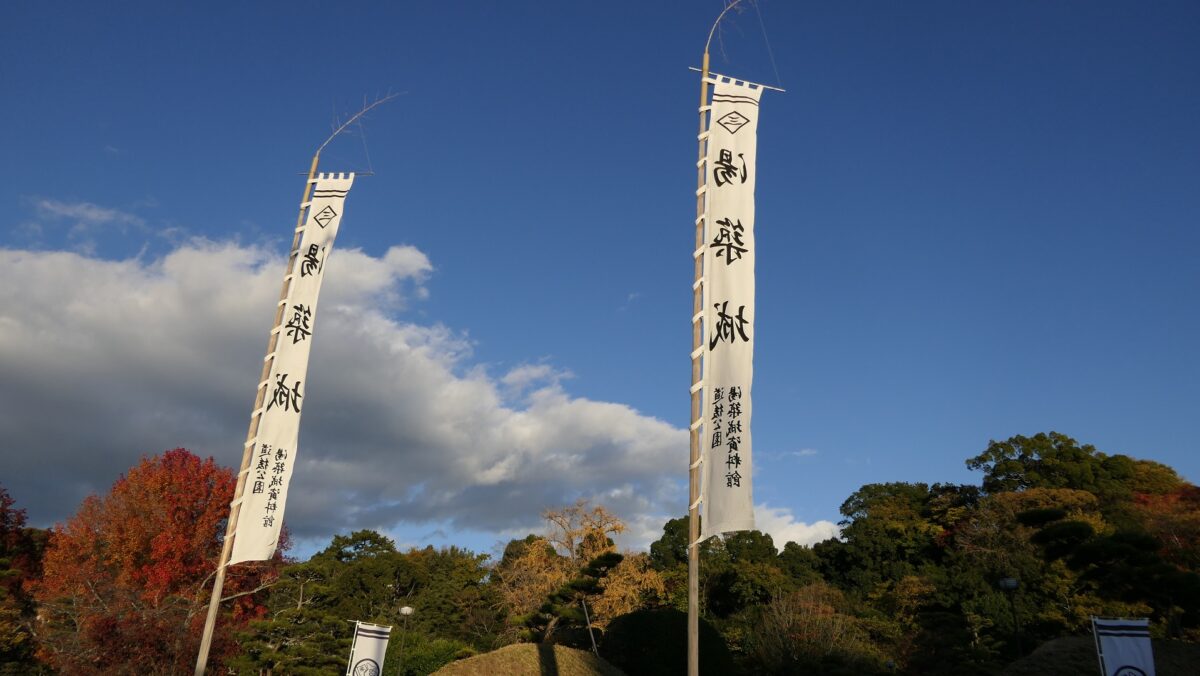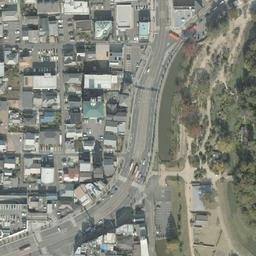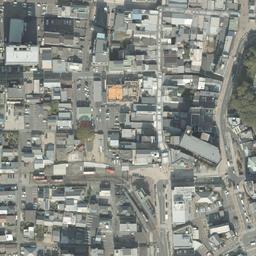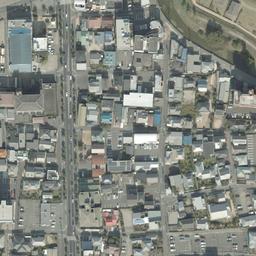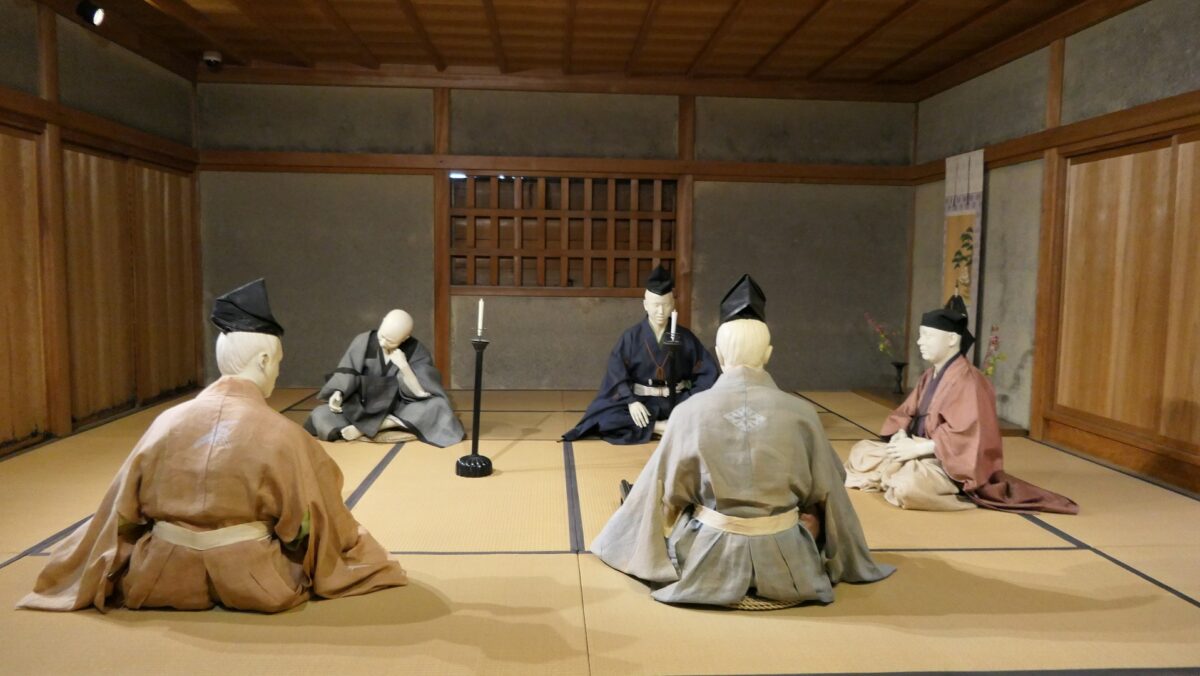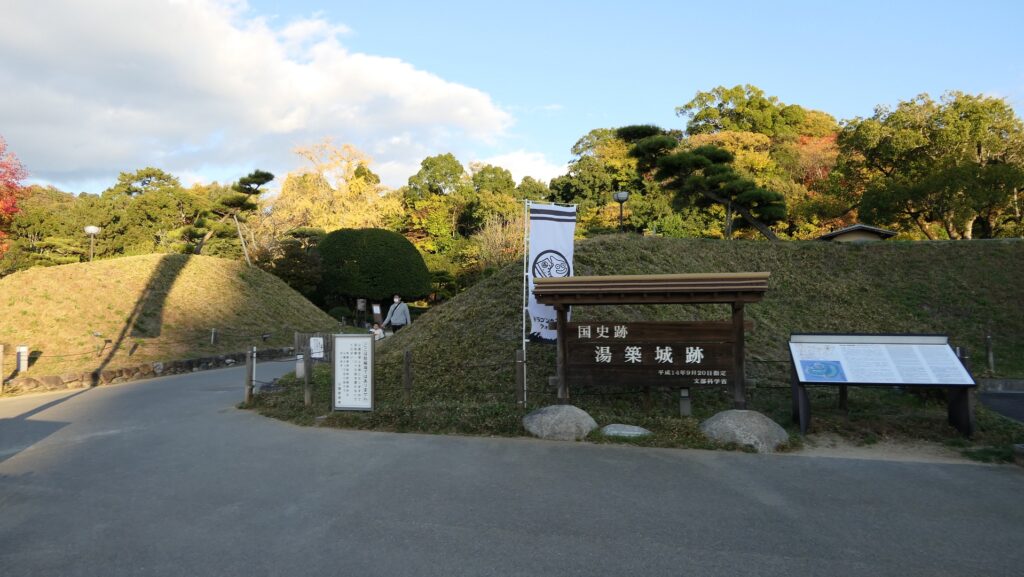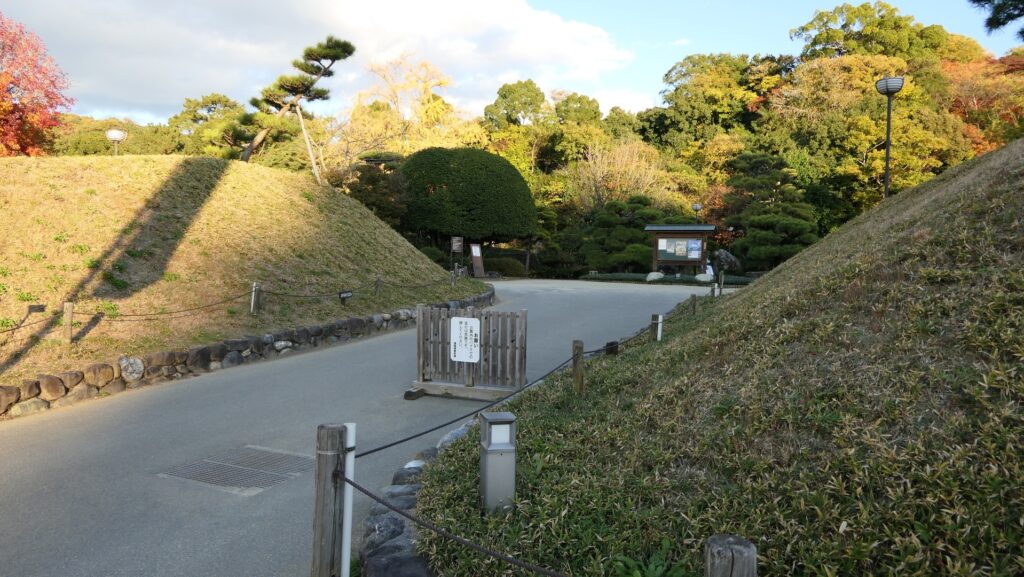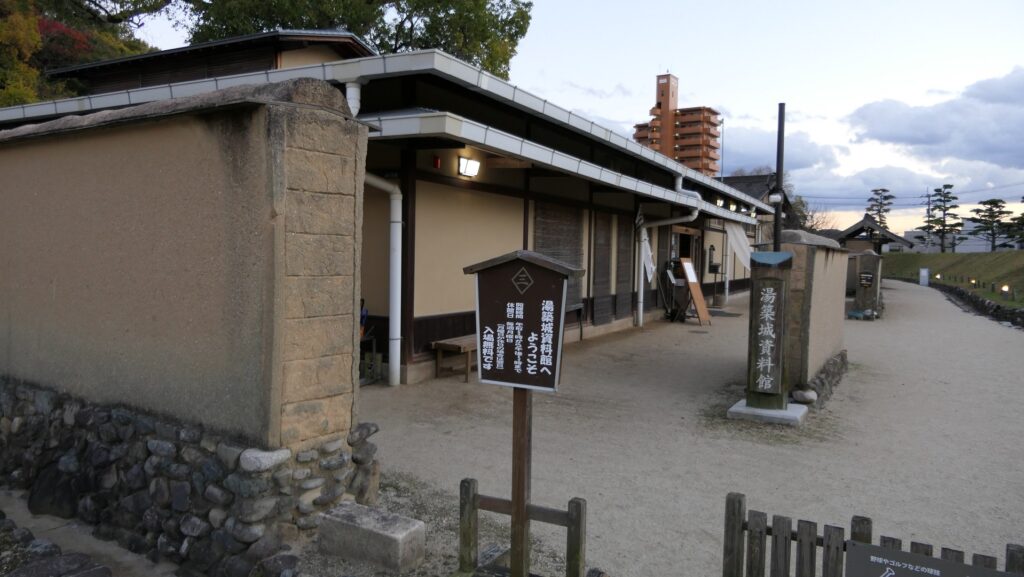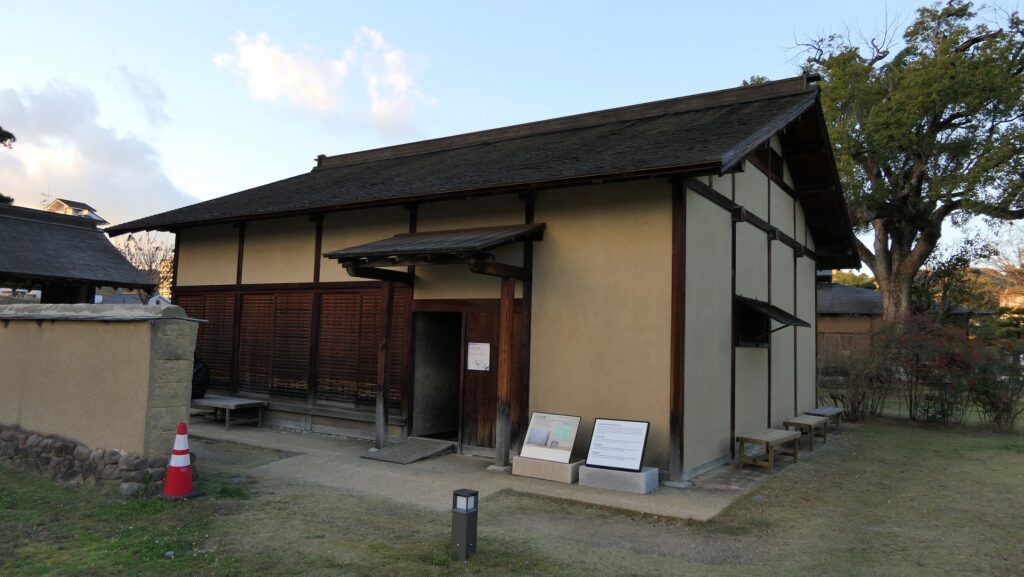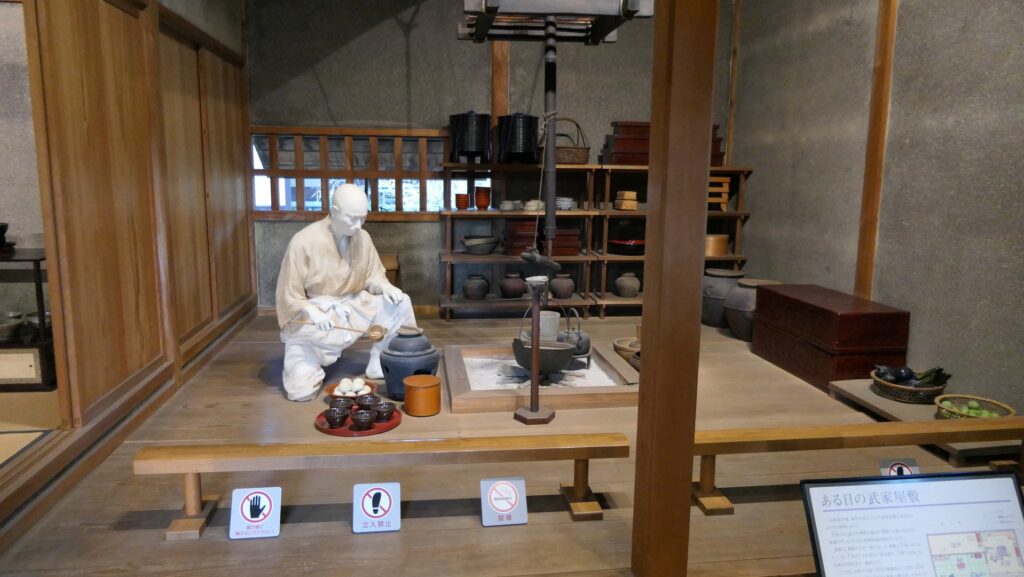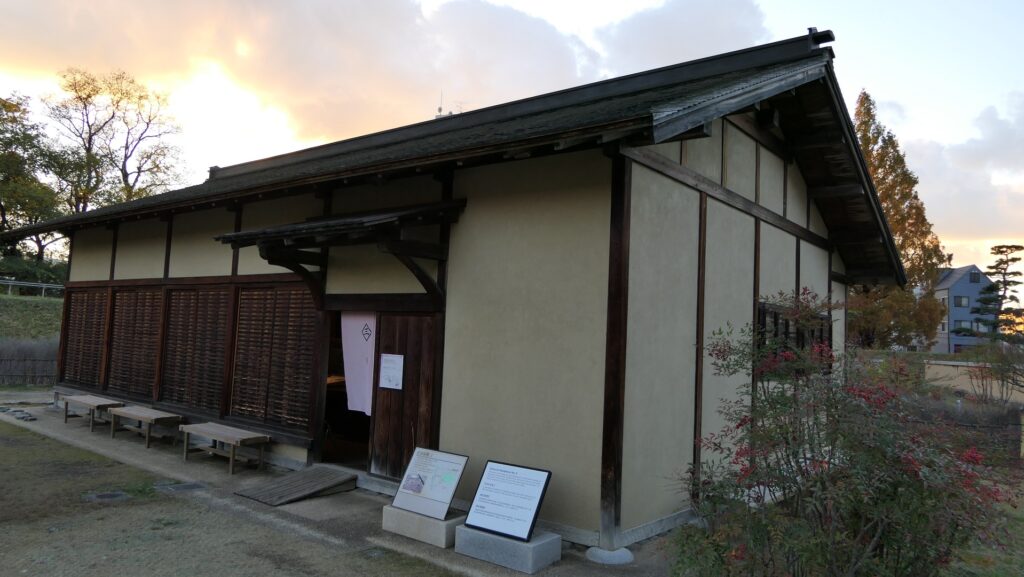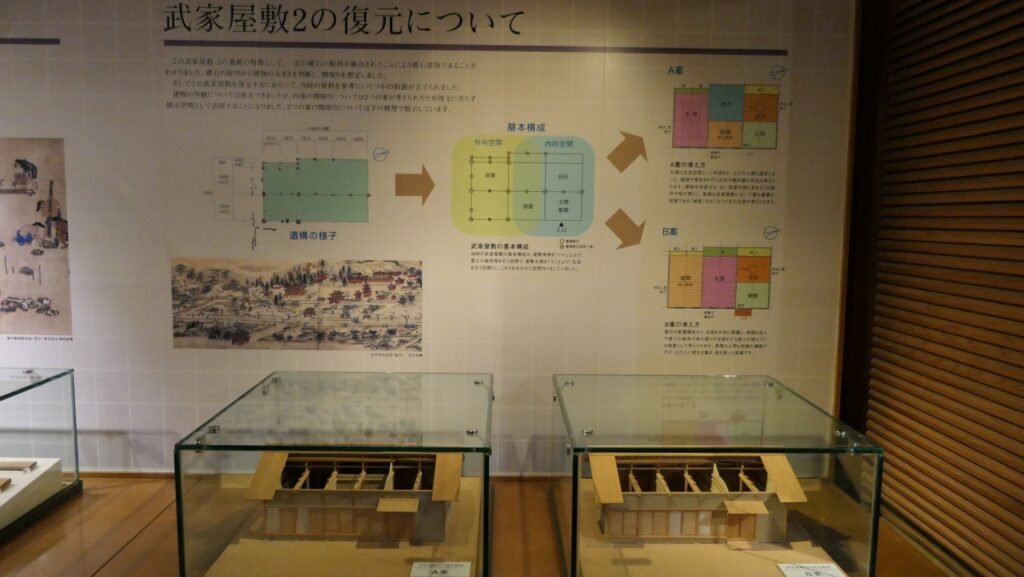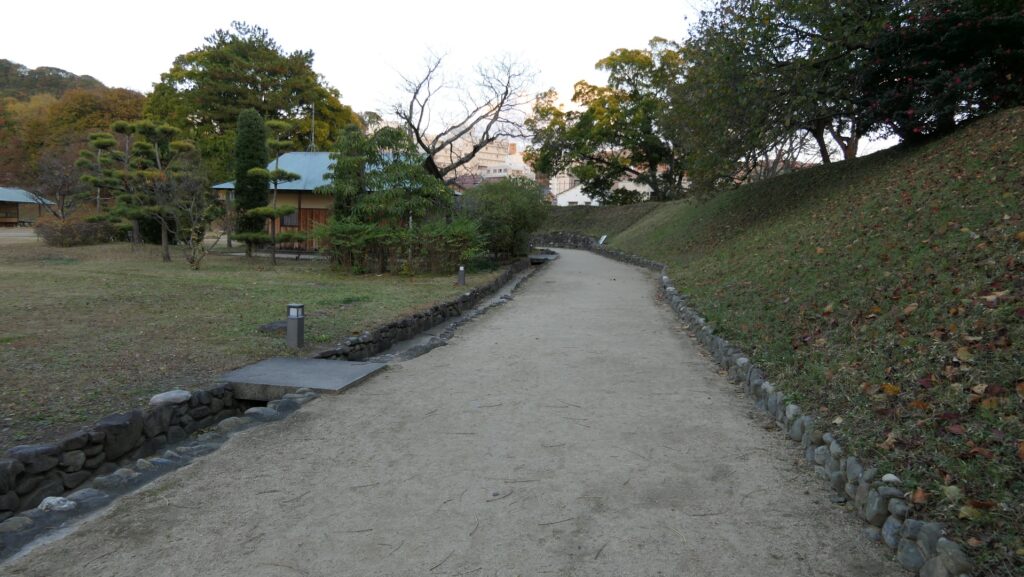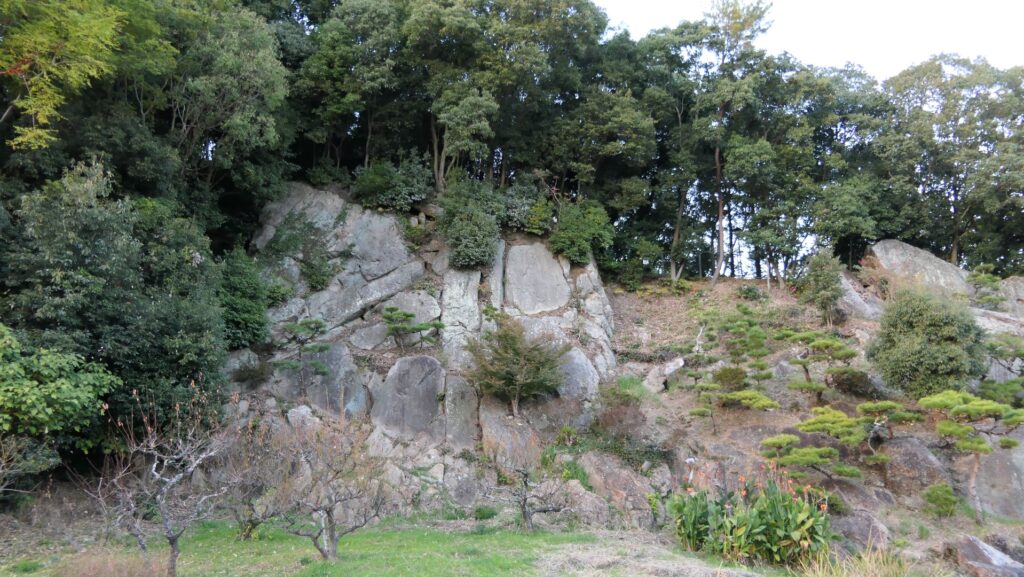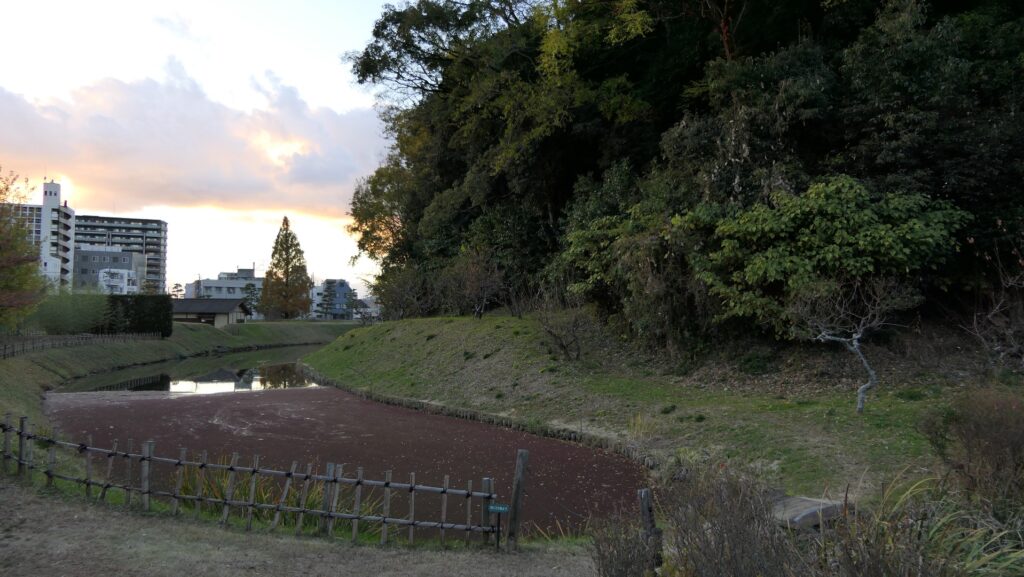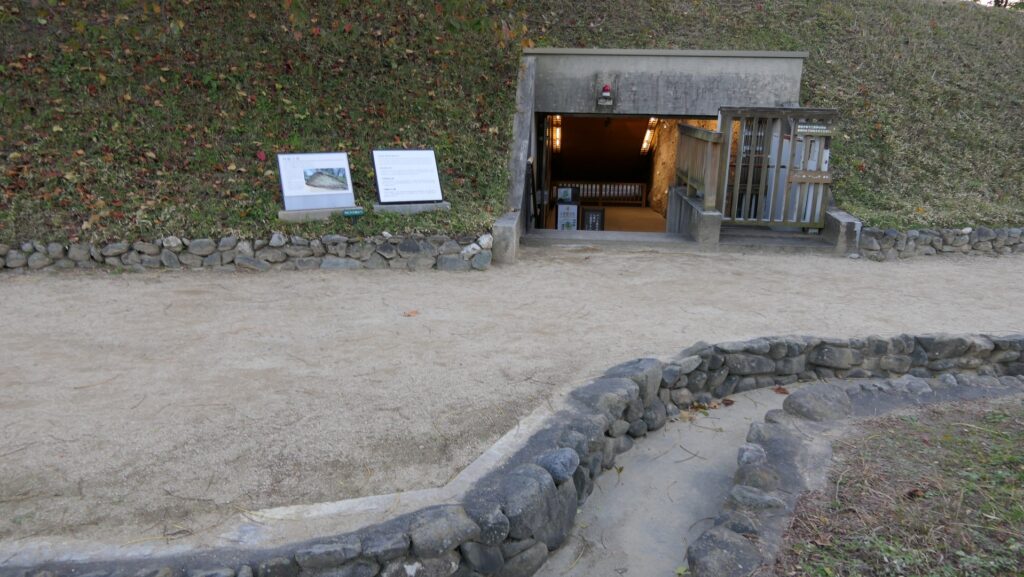Features
Great View from Top of Hill
Of course, you can climb up to the top of the hill, which is called the Hondan (like the Main Enclosure) which is now used as the observation platform. You can find a few explanations of the castle there because the excavation team didn’t find any relics. However, you can enjoy a view of Matsuyama Castle and the Dogo Spring Spot Town from the same platform. In fact, in the first 17th Century, Takatora Todo, who shared Iyo Province with his rival, Yoshiaki Kato, once used the abandoned Yuzuki Castle to monitor Matsuyama Castle which Yoshiaki built. Takatora would have seen the same view as we see now from Yuzuki Castle.
The aerial photo around the castle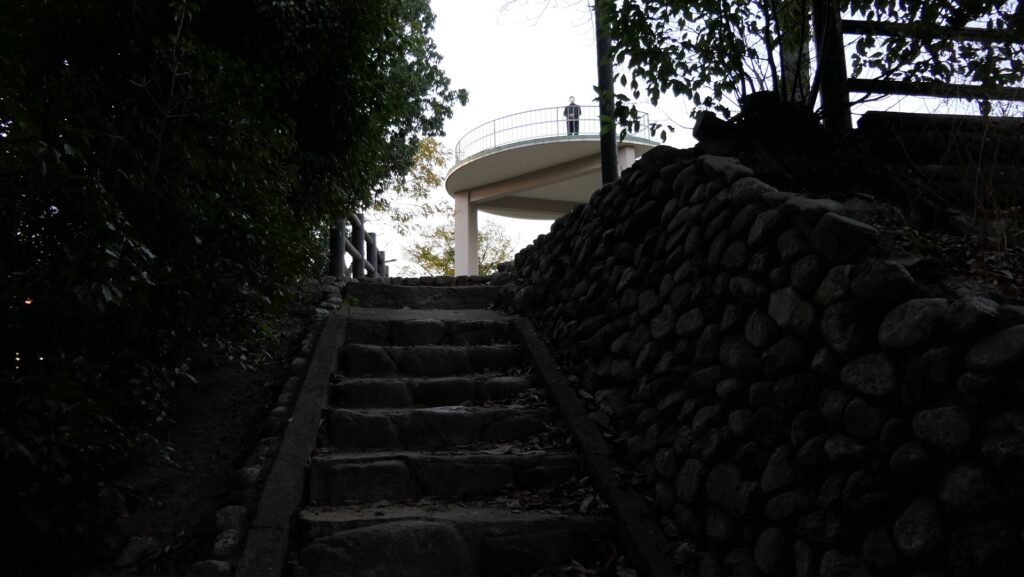
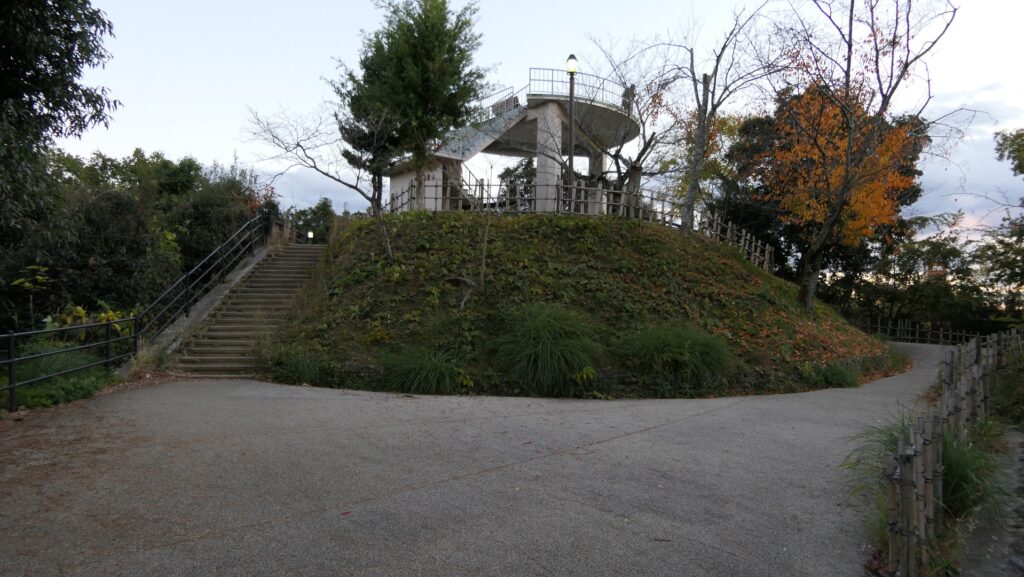
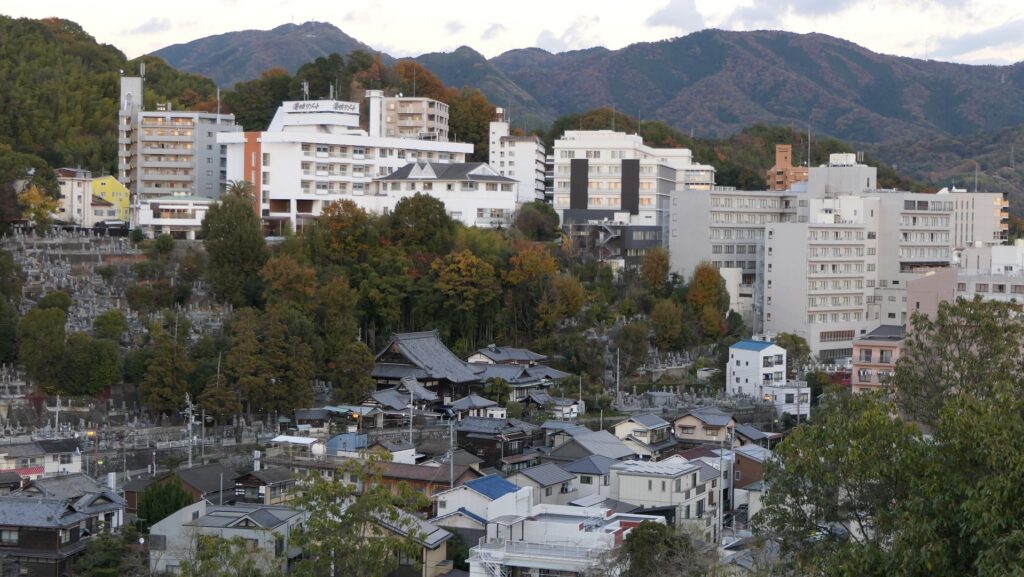
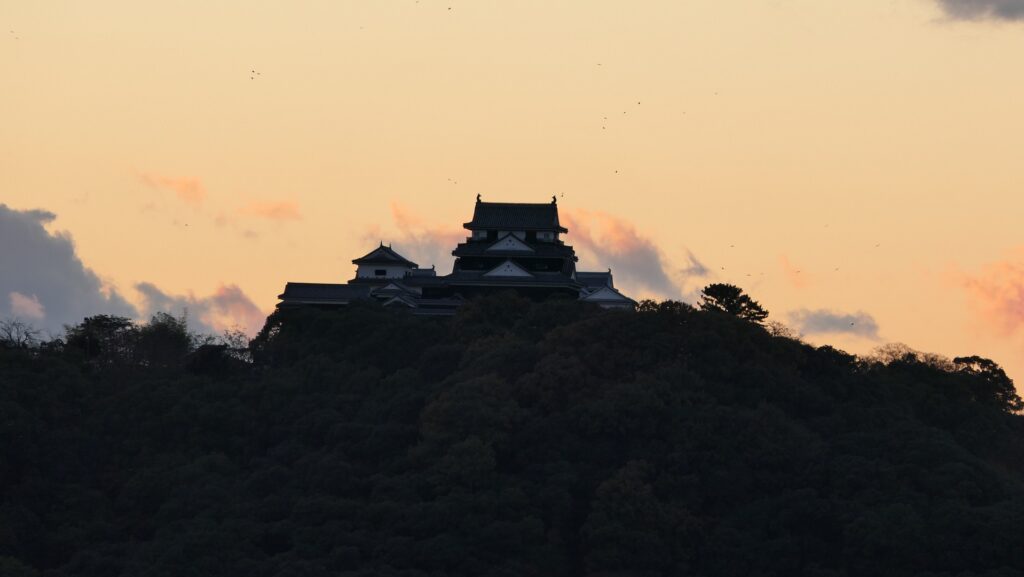

Later History
In 1888 during the Meiji Era, Ehime Prefecture opened the Dogo Park at the ruins of Yuzuki Castle. The park became popular when a zoo opened in the park in 1953. However, the zoo was moved to another site in 1987 because of two issues. One was because of the bad odor, and another was because of the noise in the city area. The research of the Yuzuki Castle Ruins was done in the former area of the zoo before being turned into a modern Japanese garden. Plenty of relics were discovered in a good condition. Therefore, the prefecture reversed its decision to turn the ruins into a historical park in 1990. The restoration of Yuzuki Castle started in 1998 based on the results of the excavation and the examples of other sites like Ichijodani Castle before its eventual completion in 2001. the ruins were finally designated as a National Historic Site in 2002.
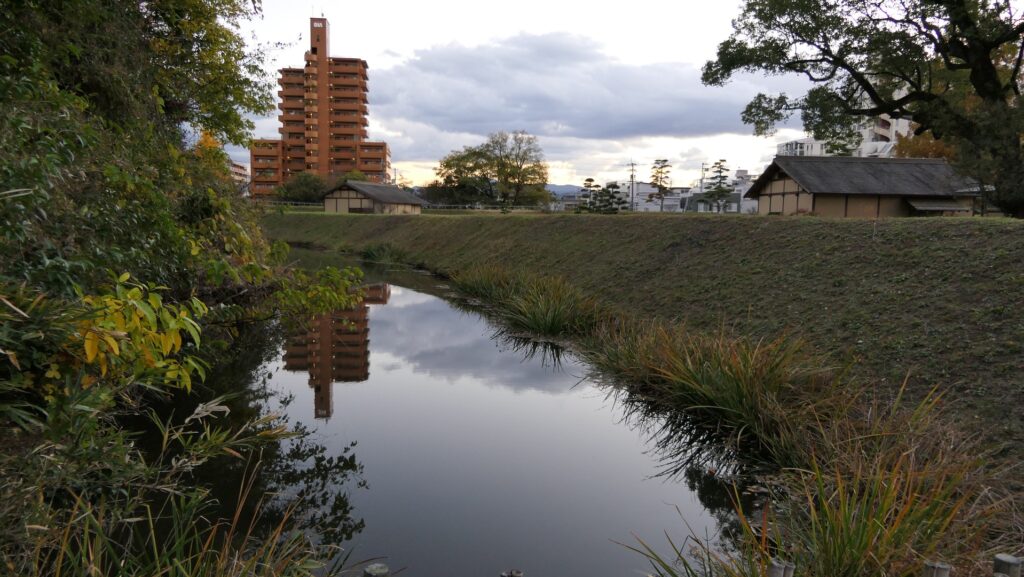
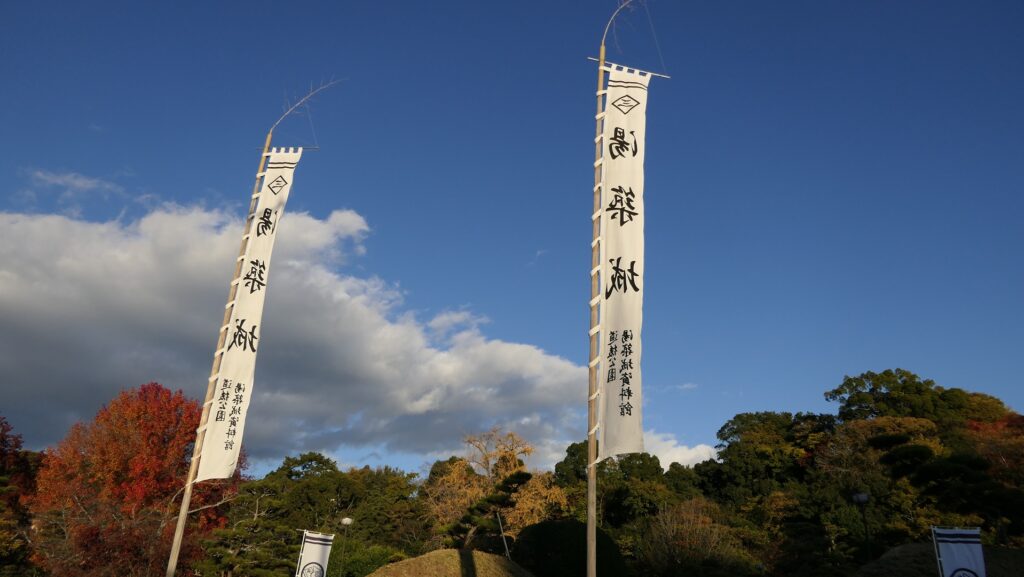
My Impression
I didn’t know if Yuzuki Castle would have survived because of its severe history. I’m grateful for the prefecture’s decision to preserve them because no one would have remembered the history of Iyo Provence before Matsuyama Castle. The Dogo Park including the ruins has a good atmosphere. I recommend walking around the park as well as the town of the Dogo Hot Spring nearby where you can see other traditional buildings such as the Isaniwa Shrine and the Dogo Onsen Honkan bathhouse.
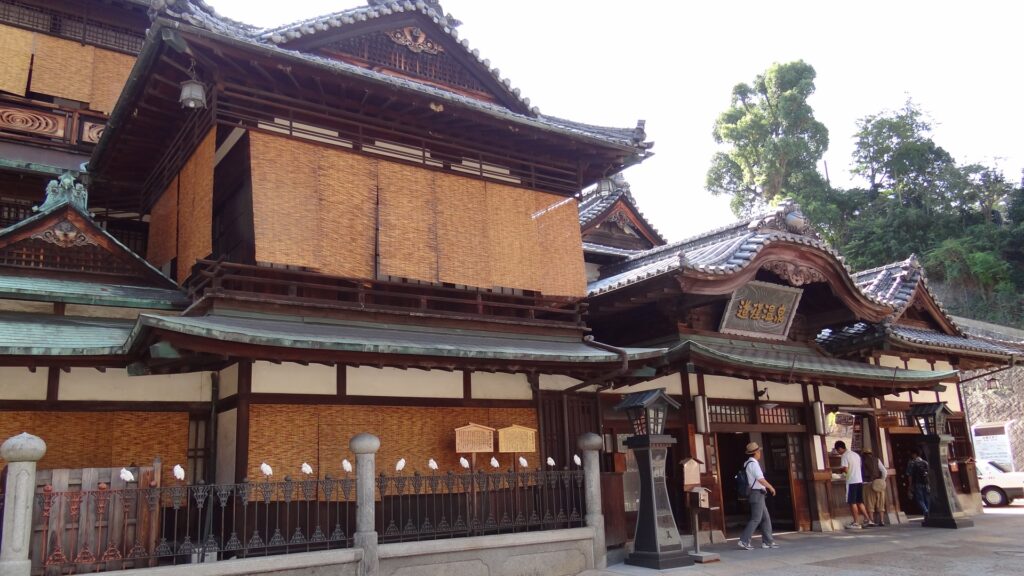
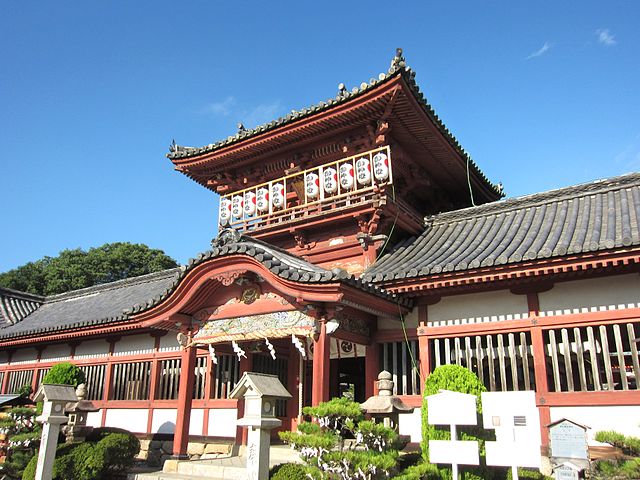
How to get There
If you want to visit the ruins by car, it is about 20 minutes away from Matsuyama IC on the Matsuyama Expressway. The Dogo Park offers parking lots.
By public transportation, take the tram in front of JR Matsuyama Station and get off at the Dogo-koen station.
If you go there from Tokyo or Osaka, I recommend traveling by plane or using an express bus.
That’s all. Thank you.
Back to “Yuzuki Castle Part1”
Back to “Yuzuki Castle Part2”

